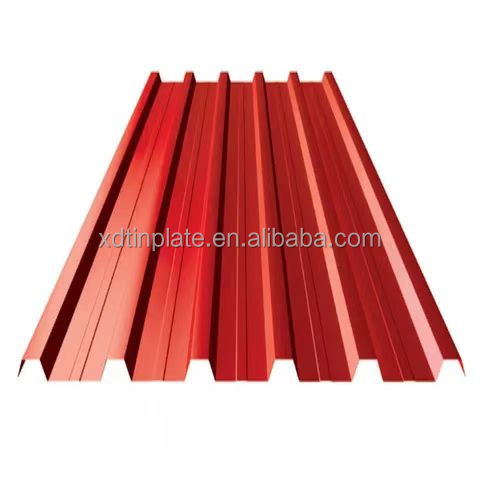
Jul . 27, 2024 18:15 Back to list
Current Trends and Factors Influencing Galvanized Iron Prices in Manufacturing Industries
Understanding the Pricing Dynamics of Galvanized Iron A Focus on Factory Production
Galvanized iron, a type of steel coated with a layer of zinc to prevent rust and corrosion, plays a crucial role in various industries, including construction, automotive, and manufacturing. As industries strive for durability and longevity in their materials, the demand for galvanized iron continues to rise, leading to fluctuations in its price. This article explores the factors influencing galvanized iron prices, particularly from a factory production perspective.
Factors Influencing Galvanized Iron Prices
1. Raw Material Costs The primary factor affecting galvanized iron prices is the cost of raw materials, particularly iron ore and zinc. The price of these commodities is influenced by global market trends, supply and demand dynamics, and geopolitical factors. For instance, if the production of zinc decreases due to environmental regulations or mining strikes, the cost of galvanized iron is likely to increase.
2. Production Processes The methods employed in the production of galvanized iron can affect its cost. Factories that utilize advanced technology may incur higher initial capital expenditures but can achieve greater efficiency and lower operating costs over time. The type of galvanizing process—hot-dip galvanizing versus electro-galvanizing—also impacts pricing. Hot-dip galvanizing, while generally producing more durable steel, is a costlier process.
3. Labor Costs Labor constitutes a significant portion of manufacturing costs. As wages fluctuate due to economic conditions, minimum wage laws, and labor supply shortages, the cost of producing galvanized iron can vary. In regions with high labor costs, factories may need to adjust their pricing strategies to maintain competitiveness.
4. Transportation and Logistics The geographical location of factories plays an essential role in the pricing of galvanized iron. Transportation costs can vary significantly depending on the distance to markets and accessibility of trade routes. Factories located near key markets may have an advantage in terms of lower logistics costs, allowing them to offer more competitive pricing.
galvanized iron price factory

5. Market Demand and Competition The overall demand for galvanized iron is determined by its application in various sectors, including infrastructure development and automotive manufacturing. During economic booms, demand tends to increase, driving prices up. Conversely, during downturns, demand may decline, leading to price reductions. Additionally, competition among manufacturers can also influence pricing structures.
6. Regulatory Factors Compliance with environmental regulations can impose additional costs on factories producing galvanized iron. Eco-friendly practices, while beneficial for sustainability, may require factories to invest in new technologies or processes, which in turn can influence product pricing.
Factory Pricing Strategies
In response to these dynamic factors, factories employ various pricing strategies to maintain profitability. Some may adopt a cost-plus pricing model, where they calculate the total costs incurred in production and add a predetermined profit margin. Others may engage in price differentiation, offering various grades of galvanized iron at different price points to cater to distinct market segments.
Moreover, strategic partnerships with suppliers can help factories mitigate raw material cost volatility, enabling them to stabilize their pricing over the long term. Additionally, factories may invest in research and development to enhance production efficiency, thereby reducing costs and allowing for more competitive pricing.
Conclusion
Galvanized iron prices are influenced by a myriad of factors, including raw material costs, production processes, labor expenses, and market dynamics. Understanding these complexities is crucial for stakeholders in the industry. As we move forward, factories will need to adapt to these changing elements and continuously refine their pricing strategies to remain competitive in the ever-evolving market landscape of galvanized iron.
-
Affordable Used Car Engines Prices Quality Used Car Engines for Sale Reliable Used Engines
NewsJul.08,2025
-
Can You Use Dish Soap on Cars? Discover Safe Car Cleaning Alternatives
NewsJul.08,2025
-
Top Car and Driver EV SUV Picks Best Electric SUVs 2023, Ratings & Reviews
NewsJul.07,2025
-
How to Buy Used Cars Cheap Best Places & Top Deals for Affordable Vehicles
NewsJul.07,2025
-
Best Danbury Used Cars for Sale Reliable Used Cars Danbury CT Dealer Ingersoll Auto Specials
NewsJul.06,2025
-
Quality Used Car Parts in Asheville Affordable Asheville NC Auto Parts Reliable Asheville Used Car Dealerships
NewsJul.06,2025